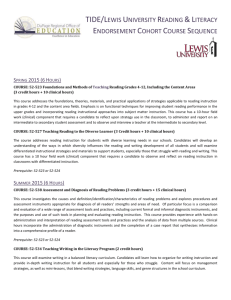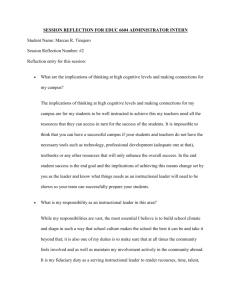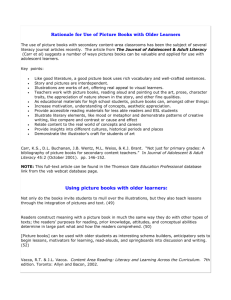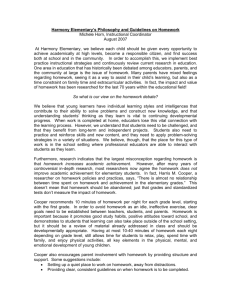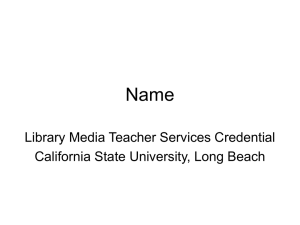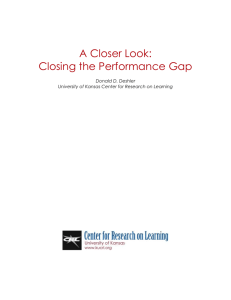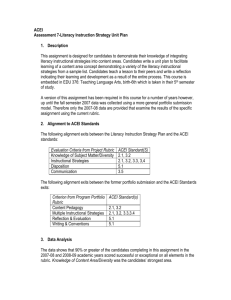Entry 2: Constructing Meaning through Reading
advertisement
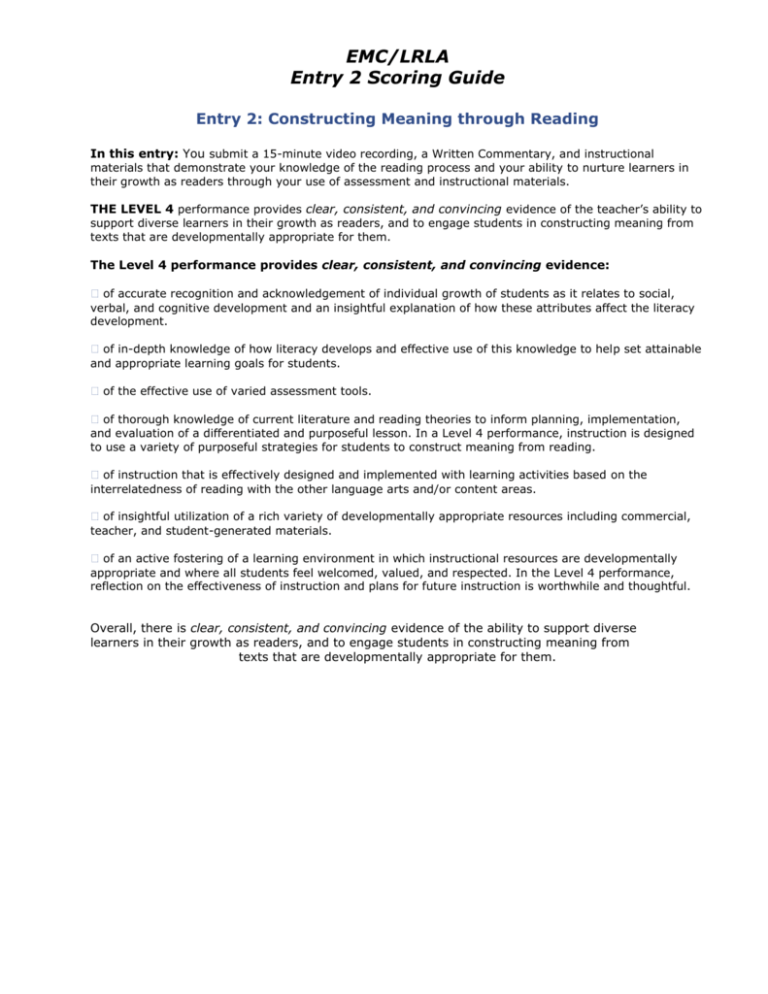
EMC/LRLA Entry 2 Scoring Guide Entry 2: Constructing Meaning through Reading In this entry: You submit a 15-minute video recording, a Written Commentary, and instructional materials that demonstrate your knowledge of the reading process and your ability to nurture learners in their growth as readers through your use of assessment and instructional materials. THE LEVEL 4 performance provides clear, consistent, and convincing evidence of the teacher’s ability to support diverse learners in their growth as readers, and to engage students in constructing meaning from texts that are developmentally appropriate for them. The Level 4 performance provides clear, consistent, and convincing evidence: � of accurate recognition and acknowledgement of individual growth of students as it relates to social, verbal, and cognitive development and an insightful explanation of how these attributes affect the literacy development. � of in-depth knowledge of how literacy develops and effective use of this knowledge to help set attainable and appropriate learning goals for students. � of the effective use of varied assessment tools. � of thorough knowledge of current literature and reading theories to inform planning, implementation, and evaluation of a differentiated and purposeful lesson. In a Level 4 performance, instruction is designed to use a variety of purposeful strategies for students to construct meaning from reading. � of instruction that is effectively designed and implemented with learning activities based on the interrelatedness of reading with the other language arts and/or content areas. � of insightful utilization of a rich variety of developmentally appropriate resources including commercial, teacher, and student-generated materials. � of an active fostering of a learning environment in which instructional resources are developmentally appropriate and where all students feel welcomed, valued, and respected. In the Level 4 performance, reflection on the effectiveness of instruction and plans for future instruction is worthwhile and thoughtful. Overall, there is clear, consistent, and convincing evidence of the ability to support diverse learners in their growth as readers, and to engage students in constructing meaning from texts that are developmentally appropriate for them. Evaluation of Evidence Guide Early and Middle Childhood/Literacy: Reading–Language Arts Portfolio Entry 2 1. Aspects of teaching. As you review the response, note evidence pertaining to EACH of the aspects of teaching listed below. Evidence may come from one or more data sources for any one aspect. a) KNOWLEDGE OF STUDENTS (KOS): Is there evidence that the Literacy: Reading-Language Arts teacher has used knowledge of early and middle childhood students’ social, verbal, and cognitive development to inform literacy instruction? b) KNOWLEDGE OF FIELD (KOF): Is there evidence of knowledge of reading theory and strategies and their application in formulating instruction? c) ASSESSMENT (ASMT): Is there logical evidence of the use of varied assessment tools? d) GOALS CONNECTIONS (G/C): What are the goals and connections between goals, student needs, and instruction? Do the goals for the lesson connect literature to the students’ needs? e) INSTRUCTION (INS): Is there evidence of instructional strategies that guide students to construct meaning from text? Is there evidence of quality teacher to student and/or student-to-student interaction? f ) INSTRUCTIONAL RESOURCES (IR): Are instructional resources reflective of literary and cultural diversity and inclusive of the learning community? g) LEARNING ENVIRONMENT (LE): Is there evidence of a learning environment that is inviting, warm, and supportive and encourages active student engagement in reading literature? h) REFLECTION (R): How did the candidate seek to improve teaching through the process of reflection? Did the candidate plan to modify future practice and seek alternative approaches based upon reflective practice?

